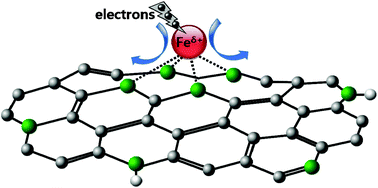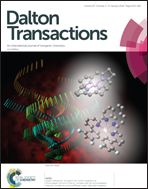Electron transport shuttle mechanism via an Fe–N–C bond derived from a conjugated microporous polymer for a supercapacitor†
Abstract
A new innovative electrode material (Fe-P800) consisting of a metal complex anchored on carbon via the utilization of iron-porphyrin conjugated microporous polymer (Fe-CMP) was prepared after pyrolyzing at 800 °C. The usage of the polymer with iron-porphyrin repeating units maximized the possible formation of Fe–Nx coordination within the bulk of the sample while the thermal treatment rendered the carbon framework to form a distinct arrangement between metal, nitrogen and carbon with a high surface area of 450 m2 g−1. The formation of the M–N–C bond, confirmed through XPS analysis, established a direct interaction between metal and carbon material. Thus, an indisputable synergistic effect was observed leading to a high capacitance of 182 F g−1 at a current density of 1 A g−1 despite its low metal loading of ∼1%. It also exhibited a highly robust cycling stability of ∼100% capacitance retention even after 5000 cycles (10 A g−1). In this study, a new mechanism was proposed wherein the metal (iron) center features an electron access point via its highly reversible redox reactivity, providing a shuttle effect for charge transfer to the conductive graphitic carbon matrix.



 Please wait while we load your content...
Please wait while we load your content...